Abstract
The relative ability of 44 erythromycin analogues to bind to ribosomes was determined by their effect on [14C]erythromycin binding to Escherichia coli ribosomes. The association and dissociation constants of each of these erythromycin derivatives were determined as well as their interaction coefficient for their binding to ribosomes. Substitutions were made on various portions of the erythromycin molecule with retention of substantial activity as measured by inhibition of [14C]erythromycin binding to ribosomes. Since the effect of erythromycin analogues on [14C]erythromycin binding to ribosomes provides a relatively sensitive assay for these compounds, erythromycin analogues with relatively little affinity for ribosomes could be detected. Compounds with association constants of 104 M−1 were detectable; the association constant for erythromycin binding to ribosomes was approximately 108 M−1. Thus, compounds with 0.0001 the association constant of erythromycin were detectable. This assay could be used alone or in conjunction with microbiological assays for primary screening of active analogues or other compounds which interfere with [14C]erythromycin binding to ribosomes. It permits an estimate of the general activity of compounds rapidly and directly. Variables such as metabolic modifications of the compounds and permeability are excluded. The present assay reflects the ability of the compounds to interact directly with their target organelle and may serve as a useful adjunct in developing new compounds.
Full text
PDF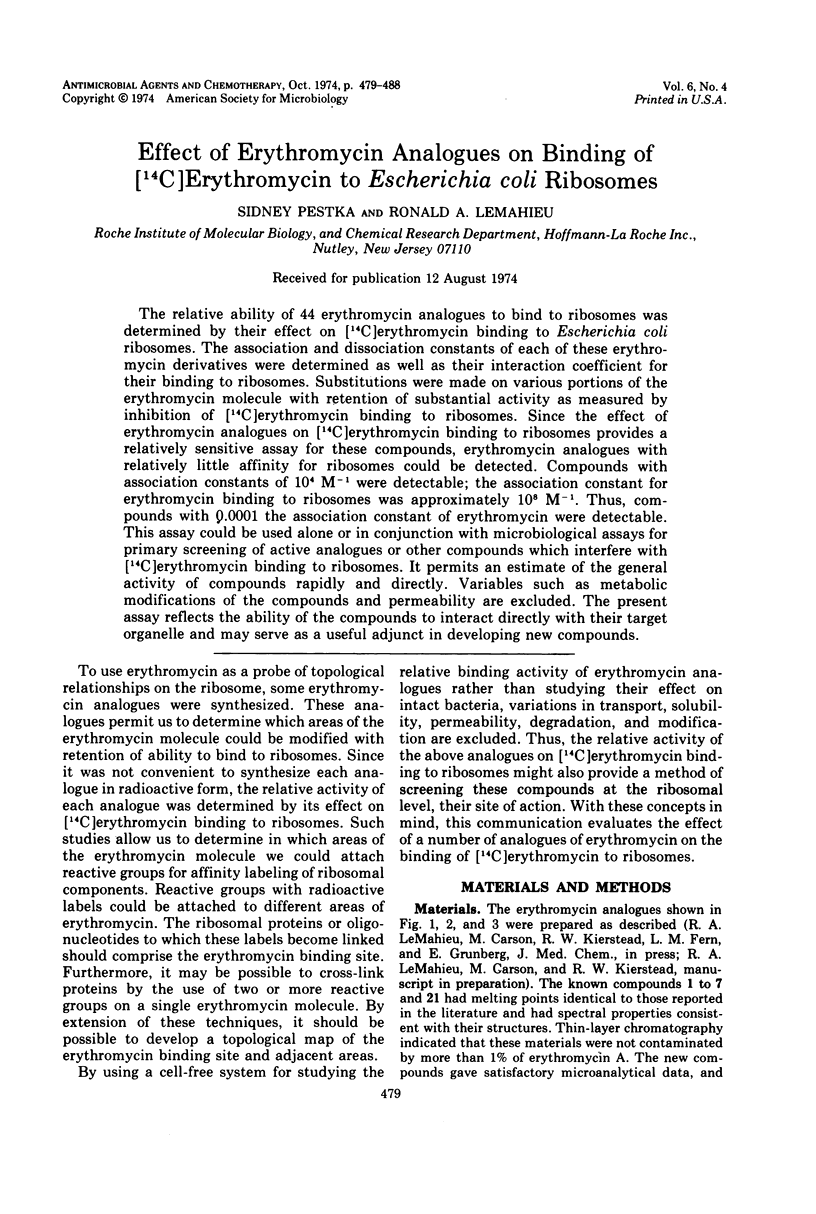
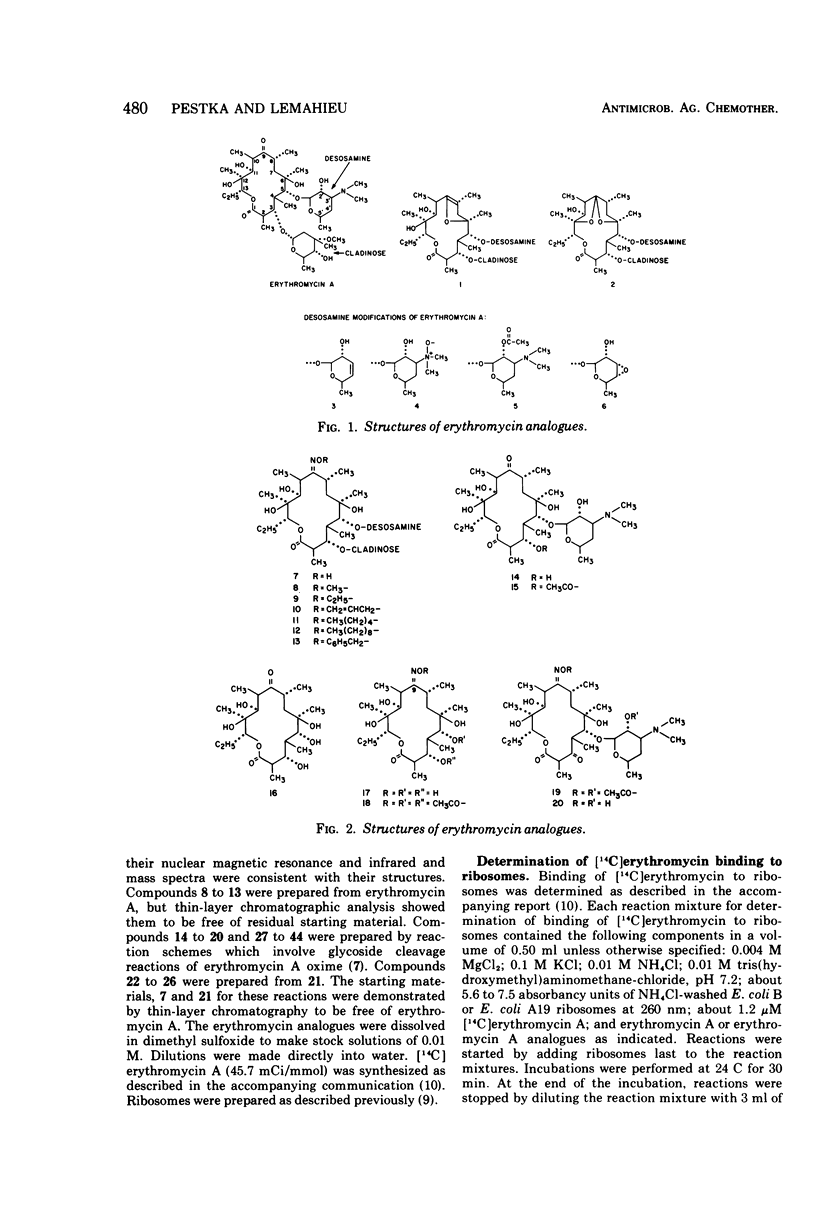
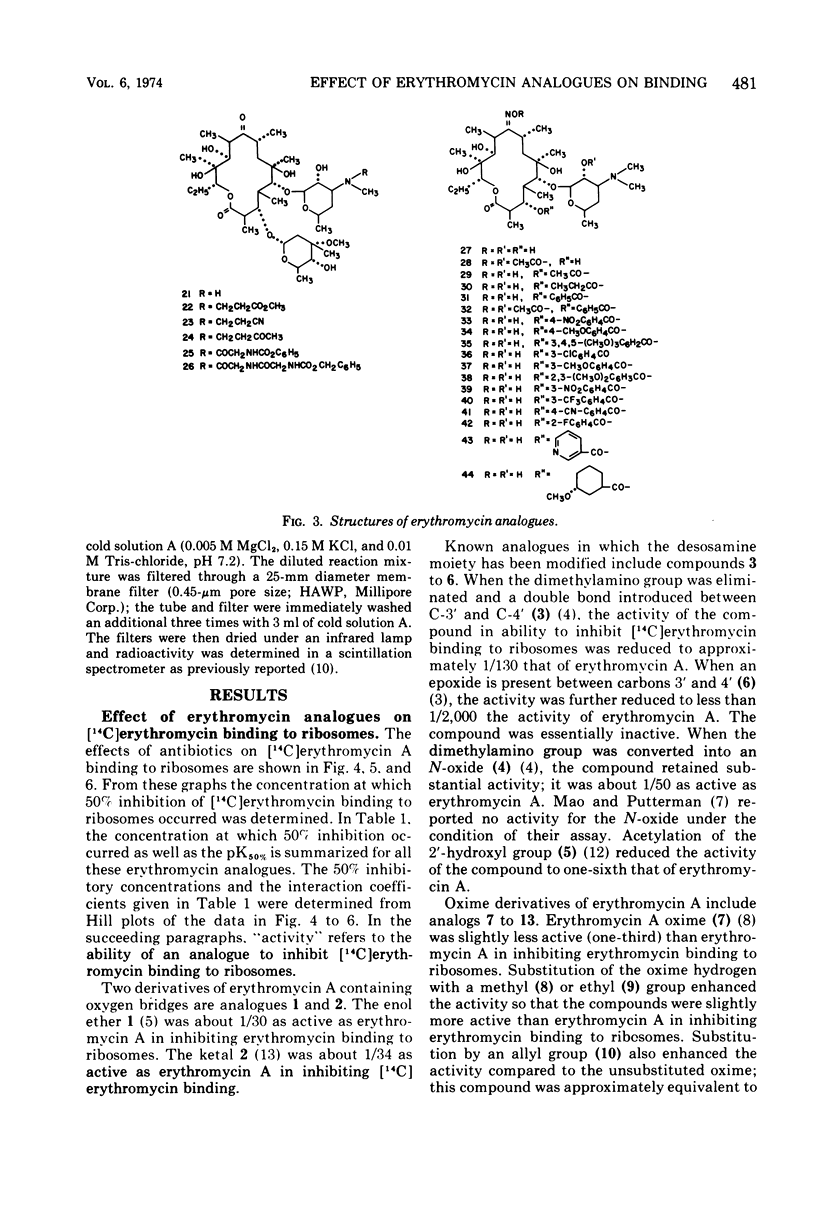
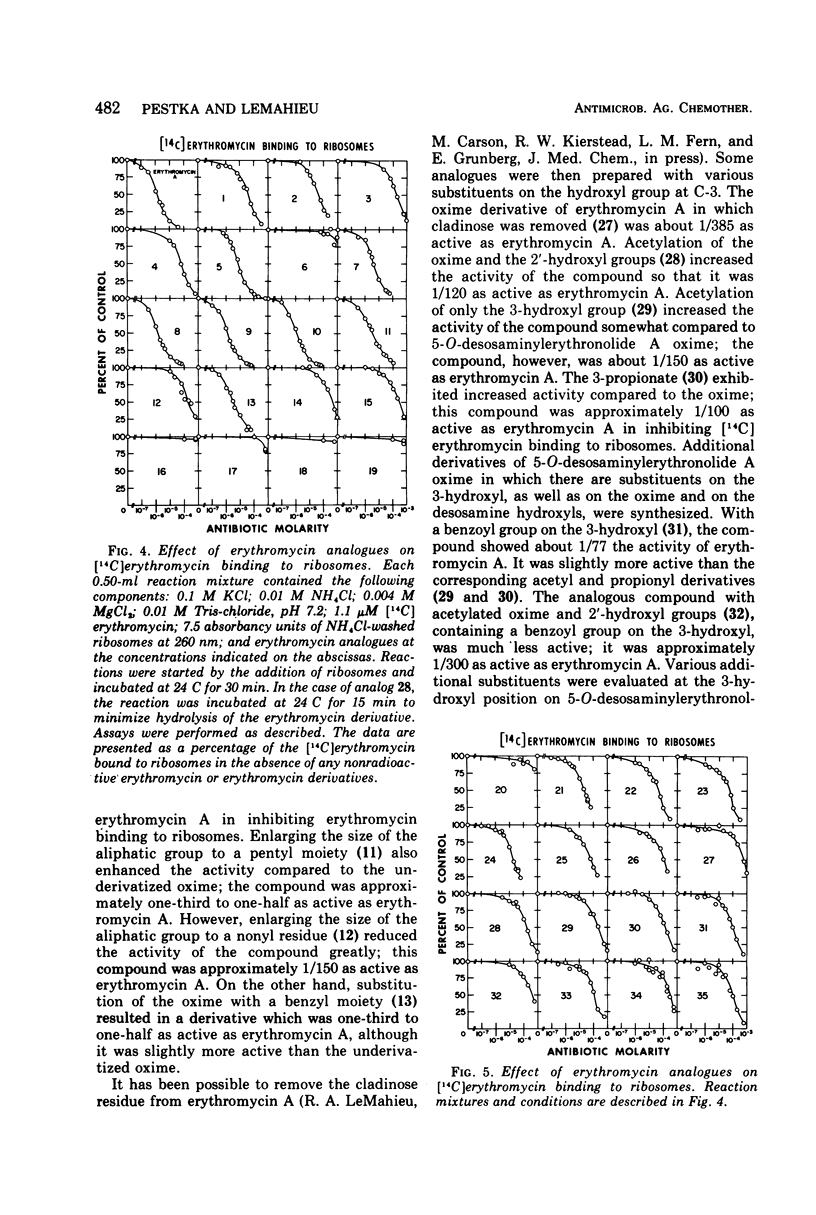
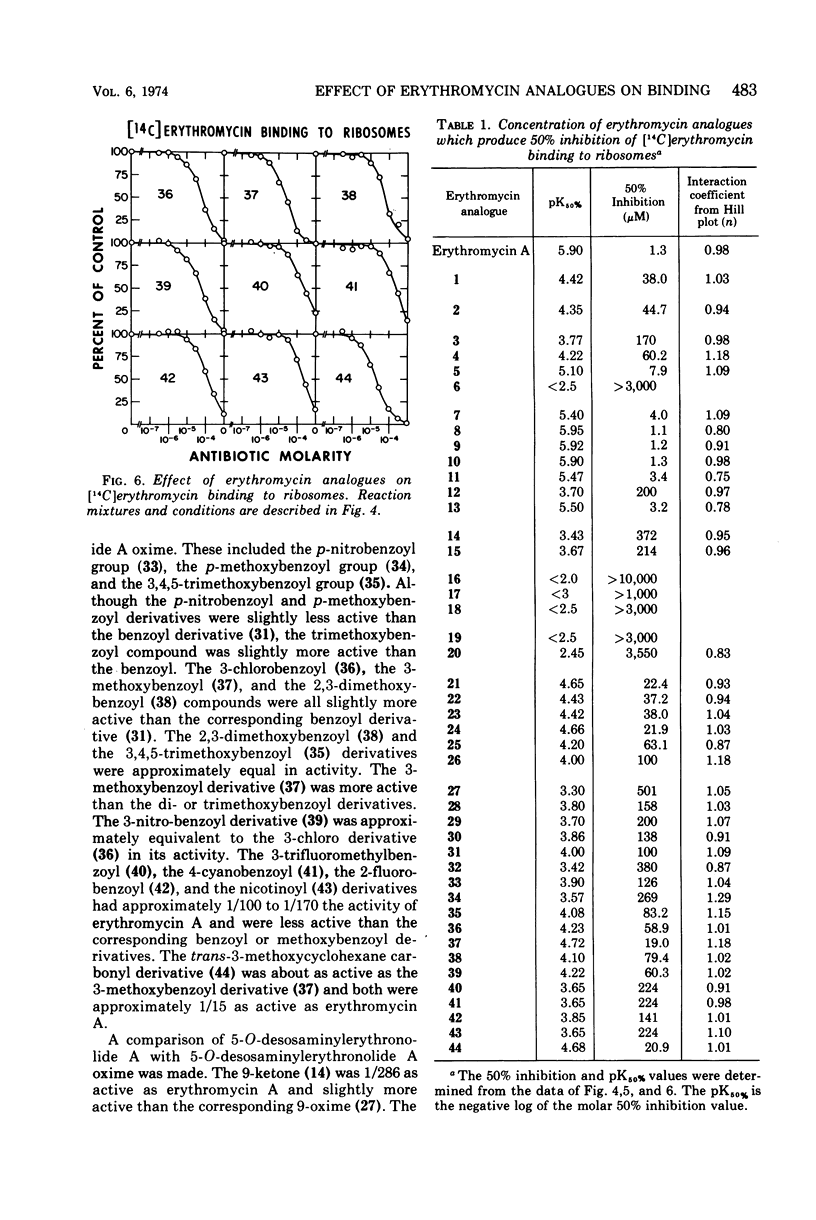
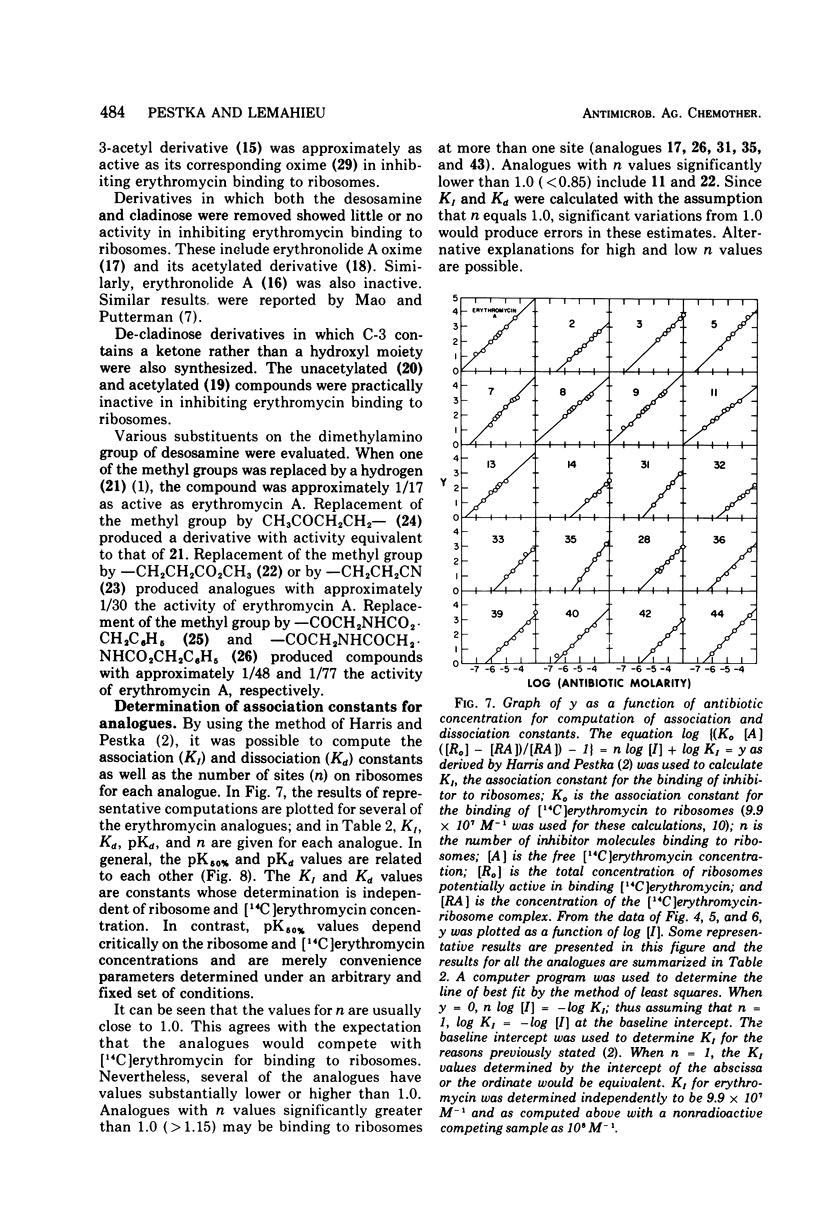
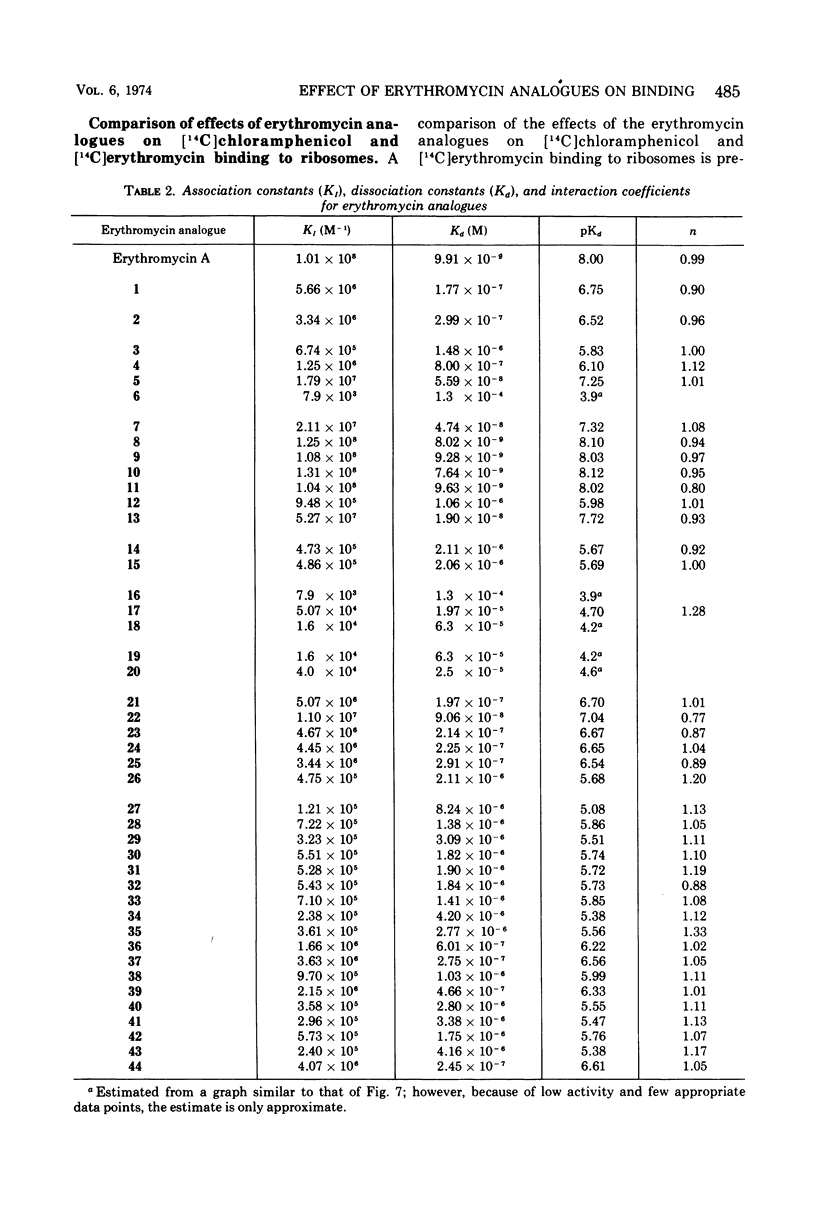
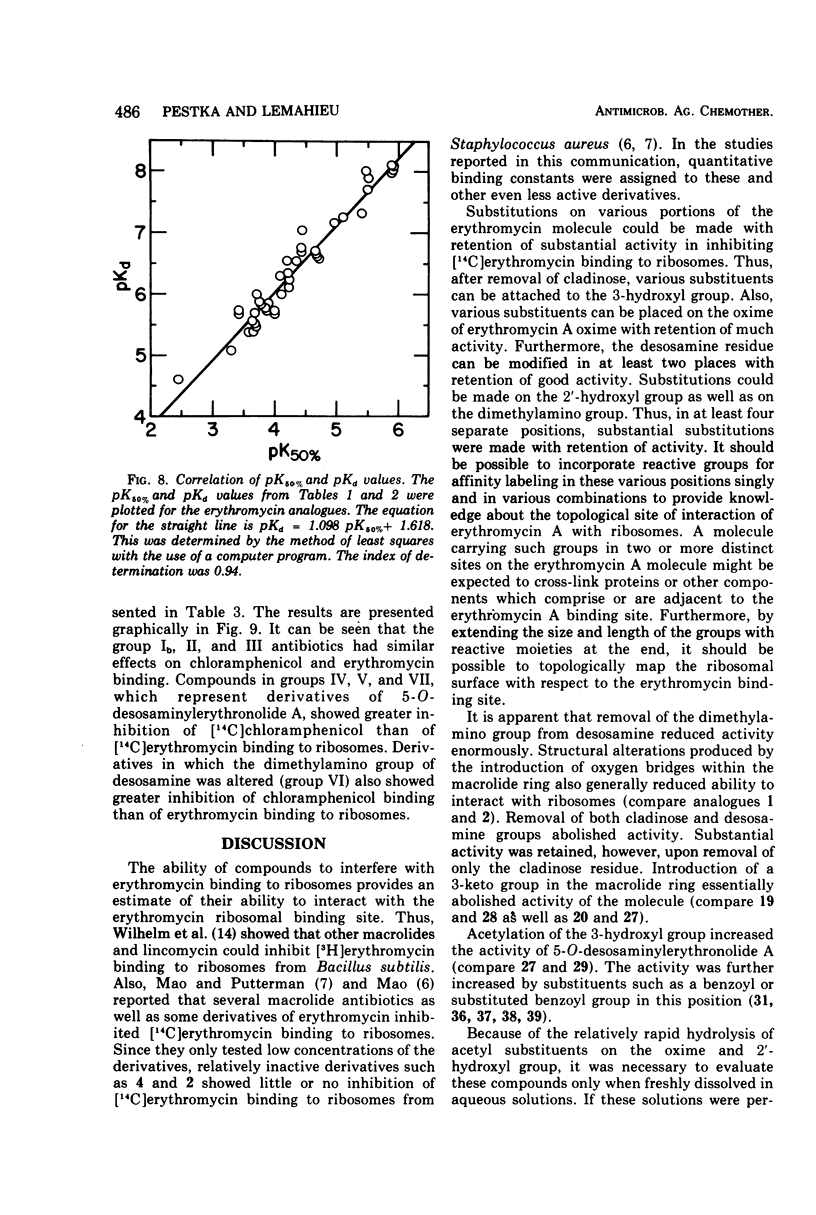
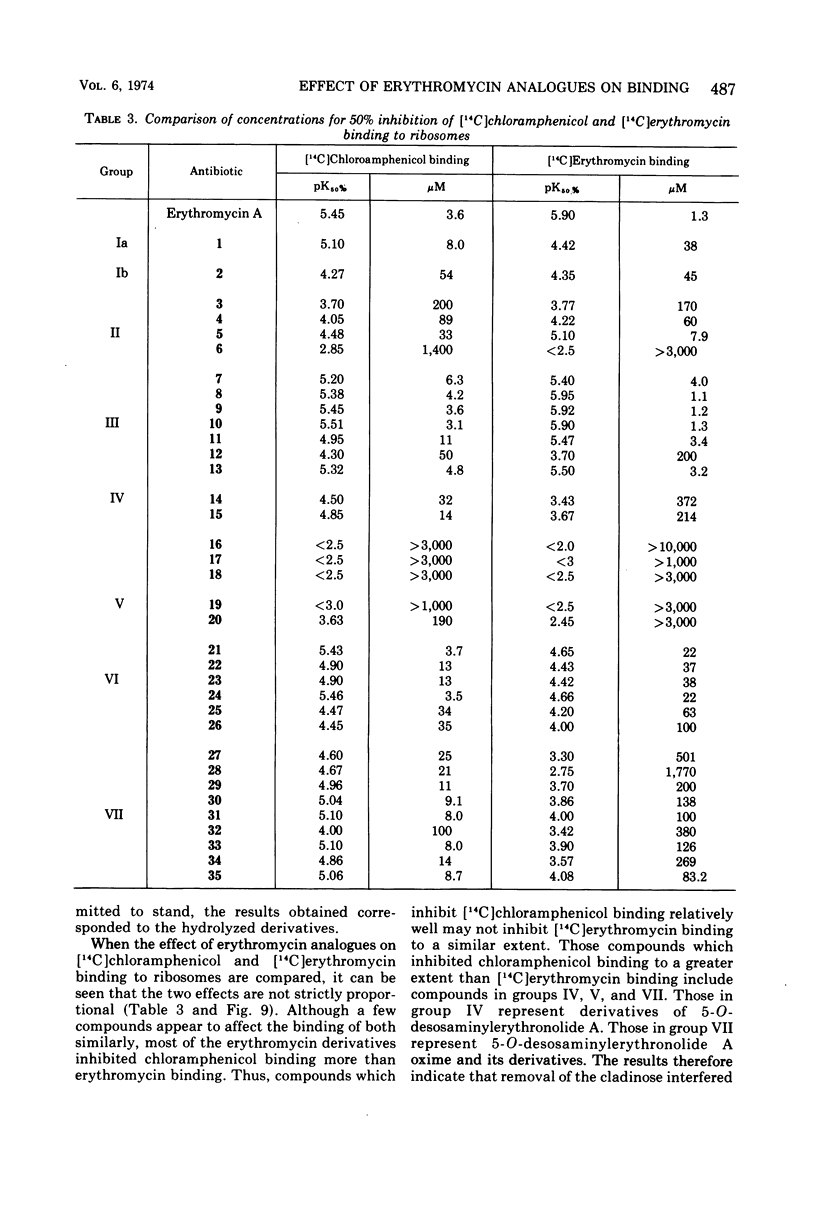
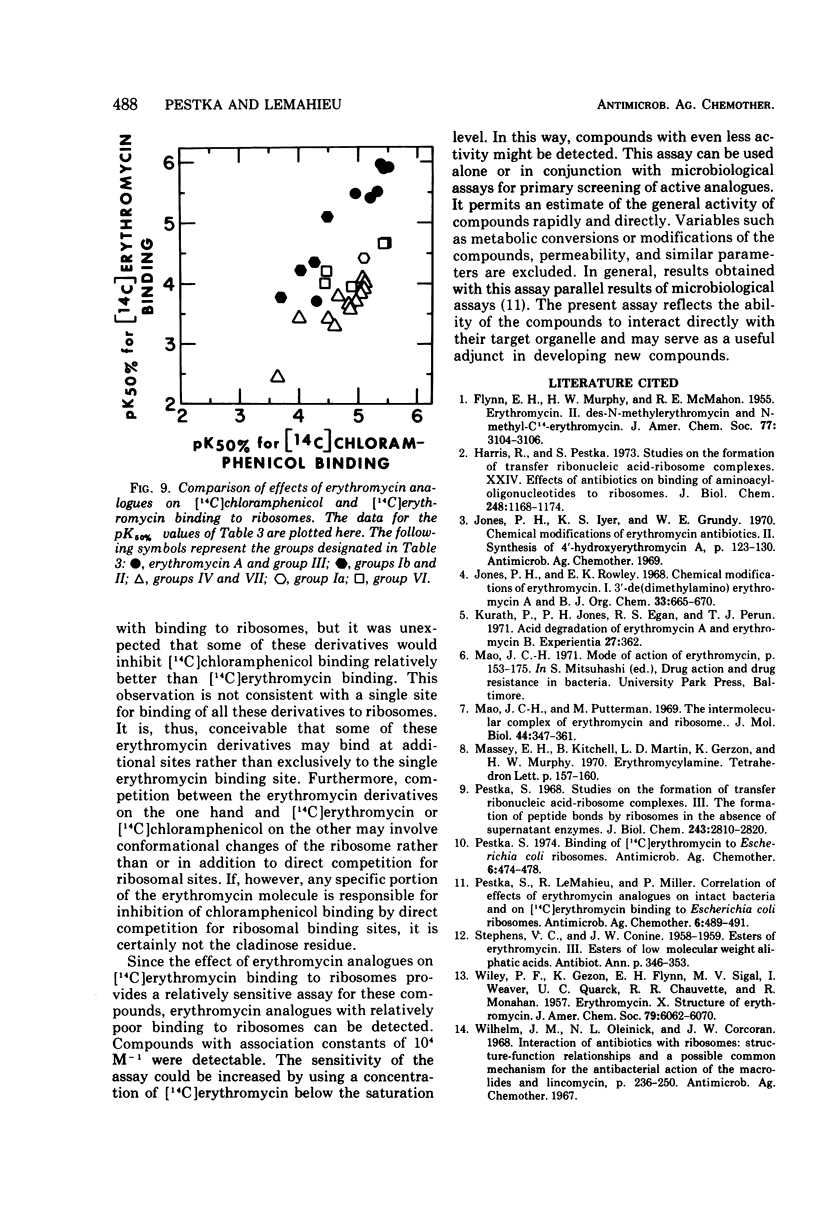
Selected References
These references are in PubMed. This may not be the complete list of references from this article.
- Harris R., Pestka S. Studies on the formation of transfer ribonucleic acid-ribosome complexes. XXIV. Effects of antibiotics on binding of aminoacyl-oligonucleotides to ribosomes. J Biol Chem. 1973 Feb 25;248(4):1168–1174. [PubMed] [Google Scholar]
- Jones P. H., Rowley E. K. Chemical modifications of erythromycin antibiotics. I. 3'-de(dimethylamino)erythromycin A and B. J Org Chem. 1968 Feb;33(2):665–670. doi: 10.1021/jo01266a041. [DOI] [PubMed] [Google Scholar]
- Kurath P., Jones P. H., Egan R. S., Perun T. J. Acid degradation of erythromycin A and erythromycin B. Experientia. 1971 Apr 15;27(4):362–362. doi: 10.1007/BF02137246. [DOI] [PubMed] [Google Scholar]
- Mao J. C., Putterman M. The intermolecular complex of erythromycin and ribosome. J Mol Biol. 1969 Sep 14;44(2):347–361. doi: 10.1016/0022-2836(69)90180-6. [DOI] [PubMed] [Google Scholar]
- Massey E. H., Kitchell B., Martin L. D., Gerzon K., Murphy H. W. Erythromycylamine. Tetrahedron Lett. 1970 Jan;(2):157–160. doi: 10.1016/s0040-4039(01)97664-6. [DOI] [PubMed] [Google Scholar]
- Pestka S. Binding of [14C]erythromycin to Escherichia coli ribosomes. Antimicrob Agents Chemother. 1974 Oct;6(4):474–478. doi: 10.1128/aac.6.4.474. [DOI] [PMC free article] [PubMed] [Google Scholar]
- Pestka S., Lemahieu R., Miller P. Correlation of effects of erythromycin analogues on intact bacteria and on [14C]erythromycin binding to Escherichia coli ribosomes. Antimicrob Agents Chemother. 1974 Oct;6(4):489–491. doi: 10.1128/aac.6.4.489. [DOI] [PMC free article] [PubMed] [Google Scholar]
- Pestka S. Studies on the formation of transfer ribonucleic acid-ribosome complexes. 3. The formation of peptide bonds by ribosomes in the absence of supernatant enzymes. J Biol Chem. 1968 May 25;243(10):2810–2820. [PubMed] [Google Scholar]
- STEPHENS V. C., CONINE J. W. Esters of erythromycin. III. Esters of low molecular weight aliphatic acids. Antibiot Annu. 1958;6:346–353. [PubMed] [Google Scholar]


